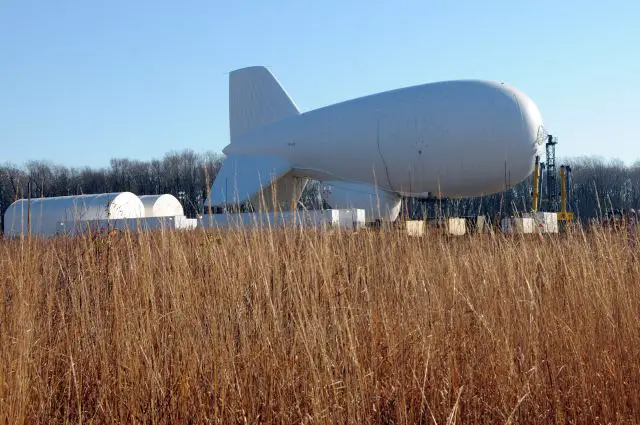U.S. Army plans to use blimps JLENS system to protect Washington D.C. against cruise missiles 191214
| a | |||
Military Defense Industry Technology - JLENS Aerostat |
|||
| Friday, December 19, 2014 09:42 AM | |||
| U.S. Army plans to use blimps JLENS system to protect Washington D.C. against cruise missiles. | |||
The U.S. Army plans to launch two stationary blimps next week to better
protect the Washington, D.C. area from cruise missiles and other possible
air attacks. The aerostat, part of the "Joint Land Attack Cruise
Missile Defense Elevated Netted Sensor" system, referred to as JLENS
for short, is a nearly 250-foot blimp-like vehicle that will stay aloft
for a three-year evaluation period. |
|||
 The JLENS aerostat will be tethered to the ground at Graces Quarters, part of Aberdeen Proving Ground, Md. It will float at an altitude of about 10,000 feet. The aerostat carries radar equipment meant to help better detect cruise missiles. |
|||
| |
|||
| Experiences
in Operation Iraqi Freedom demonstrated that even conventional cruise
missiles with limited reach could have disruptive tactical effects, in
the hands of a determined enemy. Meanwhile, the proliferation of cruise
missiles and associated components, combined with a falling technology
curve for biological, chemical, or even nuclear agents, is creating longer-term
hazards on a whole new scale. Intelligence agencies and analysts believe
that the threat of U.S. cities coming under cruise missile attack from
ships off the coast is real, and evolving. |
|||
 Lt. Col. William Pitts, with 263rd Army Air Defense Command, spoke with members of the press during a Dec. 17, 2014, media day at Graces Quarters, part of Aberdeen Proving Ground, Md. During the media day, Army officials discussed the upcoming launch of an aerostat -- part of the larger "Joint Land Attack Cruise Missile Defense Elevated Netted Sensor" system. |
|||
In
the event that a cruise missile were to enter the area observed by the
two aerostats, information gleaned from their systems would be fed into
existing NORAD Eastern Air Defense Sectors systems and that information
could in turn be used to bring down the cruise missile using aircraft
launched munitions, ground-based air defense systems, or even an Aegis
Combat System.
"It is based on who can get the best shot possible," said Maj. Gen. Glenn Bramhall, commander, 263rd Army Air and Missile Defense Command, during a press briefing, Dec. 17. Right now, the purpose of
the three-year evaluation of the JLENS system is to see how well it
can integrate into existing NORAD detection systems. The JLENS system
has already shown it is effective at detecting cruise missiles -- something
it proved during evaluation on test ranges in Utah, said Lt. Col. William
Pitts, with 263rd Army Air Defense Command. The first JLENS aerostat is expected to be launched at Graces Quarters, part of Aberdeen Proving Ground, Maryland. The second will also launch at Aberdeen Proving Ground, in the nearby Edgewood Section of the installation. |
|||
JLENS video |
|||


























